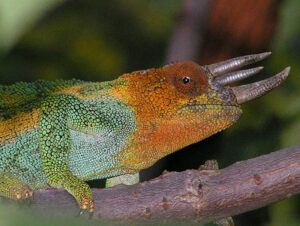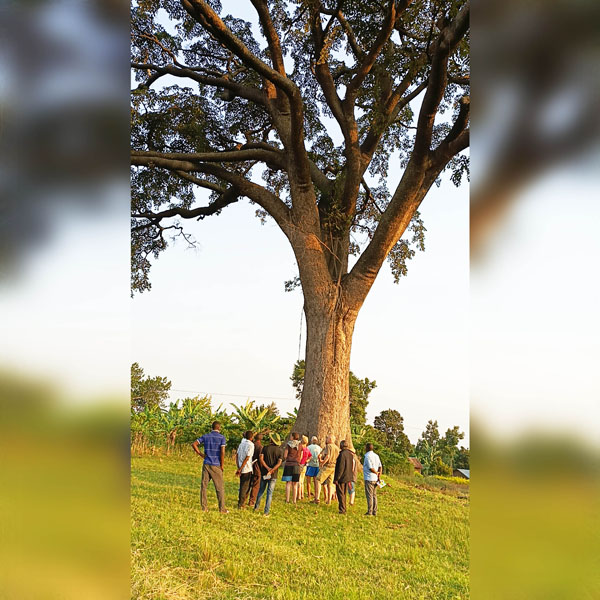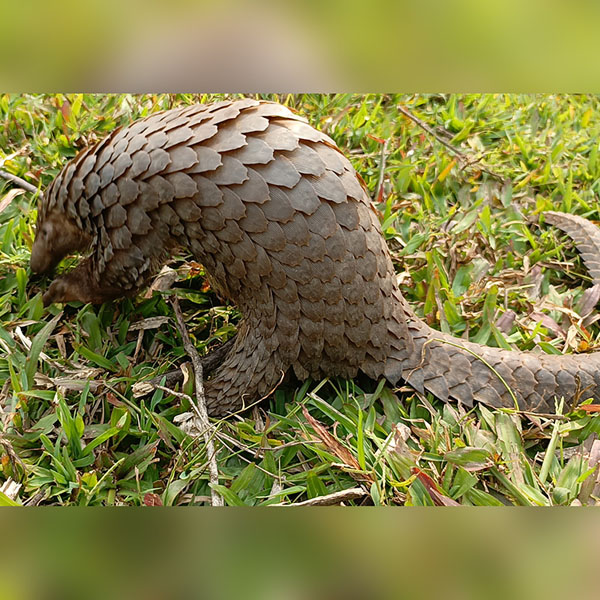Nestled in the heart of ACTREC’s biodiversity hotspots, the Endangered Rhinoceros Chameleon tourism torch point offers a truly remarkable experience for wildlife enthusiasts, nature lovers, and conservationists alike. This site is not just a haven for those interested in reptiles, but a critical sanctuary dedicated to the preservation of one of the world’s most unique and endangered species: the Rhinoceros Chameleon. Named for its distinctive horn-like nose, this chameleon species is native to the region and plays a crucial role in the local ecosystem. The tourism torch point is a focal point for conservation efforts, providing visitors with an unparalleled opportunity to engage with the natural world while learning about the ongoing efforts to protect this fascinating creature. A visit to this site is more than just an educational outing—it’s a deep dive into the world of conservation, offering a chance to witness firsthand the delicate balance between wildlife preservation and human activity.
Engaging in Preservation and Securing Activities of the Rhinoceros Chameleon

At the heart of the Endangered Rhinoceros Chameleon torch point is a robust conservation program dedicated to preserving and securing the future of this unique species. Visitors to the site are offered a rare glimpse into the behind-the-scenes efforts that go into safeguarding these chameleons and their natural habitat. The preservation activities at the torch point are multifaceted, involving habitat restoration, breeding programs, and research initiatives aimed at understanding the chameleons’ behaviors, needs, and threats. One of the most captivating aspects of the visit is the opportunity to observe these preservation efforts in action. Guided by knowledgeable conservationists, visitors can explore the carefully maintained habitats that have been designed to mimic the chameleons’ natural environment. These habitats are vital for the survival of the species, providing a safe space where the chameleons can thrive away from the dangers of habitat destruction and climate change. Additionally, the torch point is involved in reforestation projects that help restore and expand the chameleons’ natural habitat, ensuring that they have ample space to live and breed. Visitors can even participate in some of these activities, such as planting native vegetation or assisting with habitat maintenance. This hands-on involvement not only enriches the visitor experience but also fosters a deeper understanding of the complexities involved in wildlife conservation. It’s an inspiring and educational experience that highlights the importance of preserving our planet’s biodiversity for future generations.
Witnessing the Rhinoceros Chameleon in Its Natural Habitat
 One of the most thrilling aspects of visiting the Endangered Rhinoceros Chameleon torch point is the chance to see these elusive creatures up close in their natural environment. The Rhinoceros Chameleon is known for its remarkable ability to blend into its surroundings, making it a master of camouflage. However, under the guidance of experienced wildlife experts, visitors are taken on guided tours through the chameleons’ habitat, where they can observe these fascinating reptiles in action. The tours are designed to minimize disturbance to the chameleons, allowing visitors to witness their natural behaviors, such as hunting, mating, and basking in the sunlight. The chameleons’ unique horn-like nose, which is used in displays of dominance and for mating rituals, is one of the many intriguing features that visitors can observe during these tours. The torch point’s commitment to ethical wildlife viewing ensures that the chameleons are not stressed or harmed by human presence, making the experience as enriching for the animals as it is for the visitors. The thrill of spotting a Rhinoceros Chameleon, with its vibrant colors and distinctive features, is an unforgettable moment for any wildlife enthusiast. The tours also provide ample opportunities for photography, allowing visitors to capture the beauty of these rare reptiles in their natural habitat. This close encounter with the Rhinoceros Chameleon is not only a highlight of the visit but also a powerful reminder of the importance of protecting endangered species and their ecosystems.
One of the most thrilling aspects of visiting the Endangered Rhinoceros Chameleon torch point is the chance to see these elusive creatures up close in their natural environment. The Rhinoceros Chameleon is known for its remarkable ability to blend into its surroundings, making it a master of camouflage. However, under the guidance of experienced wildlife experts, visitors are taken on guided tours through the chameleons’ habitat, where they can observe these fascinating reptiles in action. The tours are designed to minimize disturbance to the chameleons, allowing visitors to witness their natural behaviors, such as hunting, mating, and basking in the sunlight. The chameleons’ unique horn-like nose, which is used in displays of dominance and for mating rituals, is one of the many intriguing features that visitors can observe during these tours. The torch point’s commitment to ethical wildlife viewing ensures that the chameleons are not stressed or harmed by human presence, making the experience as enriching for the animals as it is for the visitors. The thrill of spotting a Rhinoceros Chameleon, with its vibrant colors and distinctive features, is an unforgettable moment for any wildlife enthusiast. The tours also provide ample opportunities for photography, allowing visitors to capture the beauty of these rare reptiles in their natural habitat. This close encounter with the Rhinoceros Chameleon is not only a highlight of the visit but also a powerful reminder of the importance of protecting endangered species and their ecosystems.
Participating in Educational and Research Initiatives
 Education is a cornerstone of the Endangered Rhinoceros Chameleon torch point, and visitors are encouraged to engage with the various educational programs and research initiatives that are integral to the conservation efforts. The torch point serves as a center for learning, where visitors can attend lectures, workshops, and interactive sessions led by experts in the field of herpetology and conservation. These sessions cover a wide range of topics, from the biology and ecology of the Rhinoceros Chameleon to the broader challenges facing reptile conservation worldwide. One of the most compelling aspects of these educational programs is the opportunity to learn about the specific threats facing the Rhinoceros Chameleon, including habitat loss, climate change, and illegal wildlife trade. Visitors gain insights into the innovative strategies being employed to combat these threats, such as community-based conservation efforts, legal protections, and international collaborations. The torch point also supports ongoing research projects aimed at deepening our understanding of the Rhinoceros Chameleon’s behavior, genetics, and ecology. Visitors with a keen interest in science can even participate in some of these research activities, such as data collection or field observations. This hands-on involvement provides a unique opportunity to contribute to the global body of knowledge on this endangered species and to be part of the broader effort to ensure its survival. The educational and research components of the torch point make it a hub of knowledge and innovation, where visitors can not only learn about the Rhinoceros Chameleon but also gain a broader understanding of the importance of conservation in today’s world.
Education is a cornerstone of the Endangered Rhinoceros Chameleon torch point, and visitors are encouraged to engage with the various educational programs and research initiatives that are integral to the conservation efforts. The torch point serves as a center for learning, where visitors can attend lectures, workshops, and interactive sessions led by experts in the field of herpetology and conservation. These sessions cover a wide range of topics, from the biology and ecology of the Rhinoceros Chameleon to the broader challenges facing reptile conservation worldwide. One of the most compelling aspects of these educational programs is the opportunity to learn about the specific threats facing the Rhinoceros Chameleon, including habitat loss, climate change, and illegal wildlife trade. Visitors gain insights into the innovative strategies being employed to combat these threats, such as community-based conservation efforts, legal protections, and international collaborations. The torch point also supports ongoing research projects aimed at deepening our understanding of the Rhinoceros Chameleon’s behavior, genetics, and ecology. Visitors with a keen interest in science can even participate in some of these research activities, such as data collection or field observations. This hands-on involvement provides a unique opportunity to contribute to the global body of knowledge on this endangered species and to be part of the broader effort to ensure its survival. The educational and research components of the torch point make it a hub of knowledge and innovation, where visitors can not only learn about the Rhinoceros Chameleon but also gain a broader understanding of the importance of conservation in today’s world.
Contributing to Community-Based Conservation Efforts
The conservation of the Rhinoceros Chameleon at this torch point is deeply intertwined with the well-being of the local communities. The torch point works closely with nearby villages to promote community-based conservation initiatives that benefit both the chameleons and the people who share their habitat. Visitors to the torch point have the opportunity to learn about these initiatives and see firsthand how conservation and community development go hand in hand. For example, local communities are involved in habitat restoration projects, sustainable farming practices, and eco-tourism initiatives that provide alternative sources of income while reducing pressure on the natural environment. The torch point also supports environmental education programs in local schools, ensuring that the next generation grows up with a strong understanding of and commitment to conservation. By visiting the Endangered Rhinoceros Chameleon torch point, tourists directly contribute to these community-based efforts, as a portion of the proceeds from tourism is reinvested into local conservation and development projects. This symbiotic relationship between conservation and community empowerment is a powerful example of how protecting endangered species can also support human development and well-being. Visitors leave with a deeper appreciation for the role that local communities play in conservation and the importance of supporting sustainable practices that benefit both people and wildlife.
Conclusion
A visit to the Endangered Rhinoceros Chameleon tourism torch point is an extraordinary experience that combines wildlife observation, conservation education, and community engagement. From witnessing the delicate preservation activities designed to secure the future of this unique species to the thrill of spotting a Rhinoceros Chameleon in its natural habitat, every aspect of the visit offers a deeper connection to the natural world. The educational programs and research initiatives provide invaluable insights into the challenges and triumphs of conservation, while the community-based efforts highlight the vital role that local people play in protecting their environment. This tourism torch point is more than just a destination—it’s a gateway to understanding the intricate balance between humans and nature and the importance of preserving our planet’s biodiversity for future generations. Whether you’re a seasoned conservationist or a curious traveler, the Endangered Rhinoceros Chameleon torch point offers an unforgettable journey into the heart of wildlife conservation, leaving you inspired and empowered to make a difference in the world.









